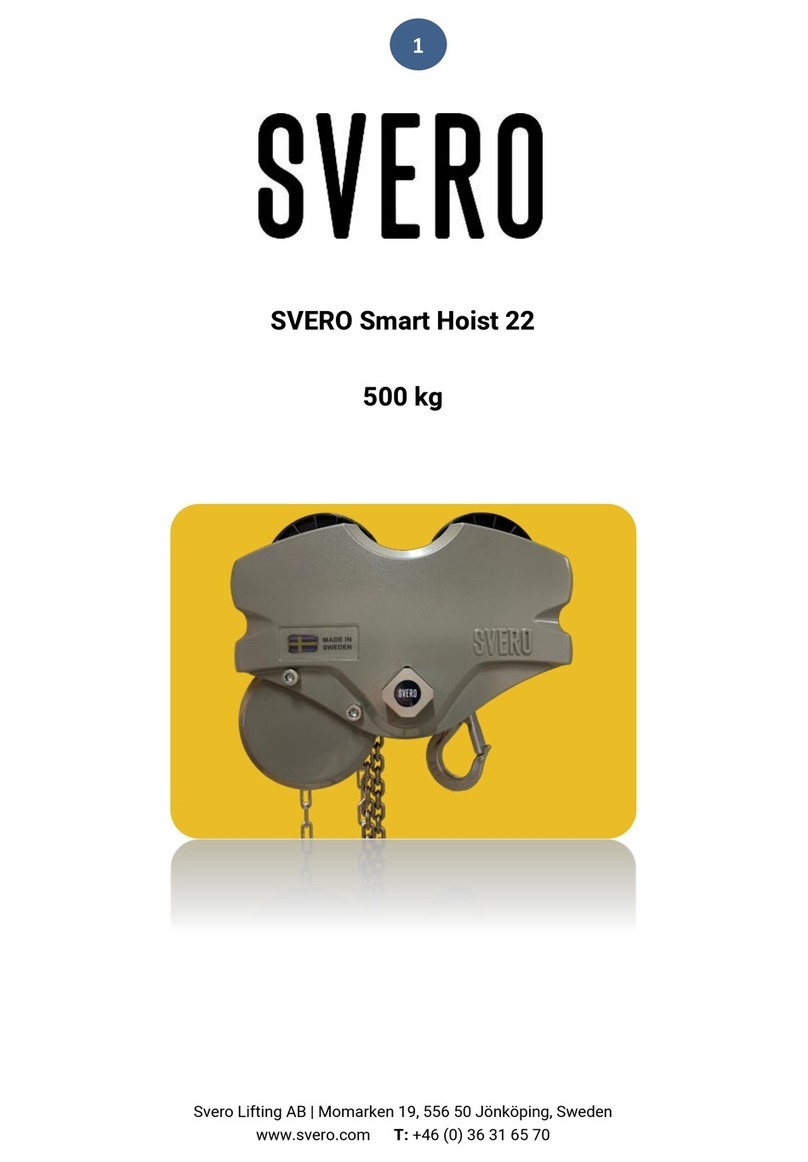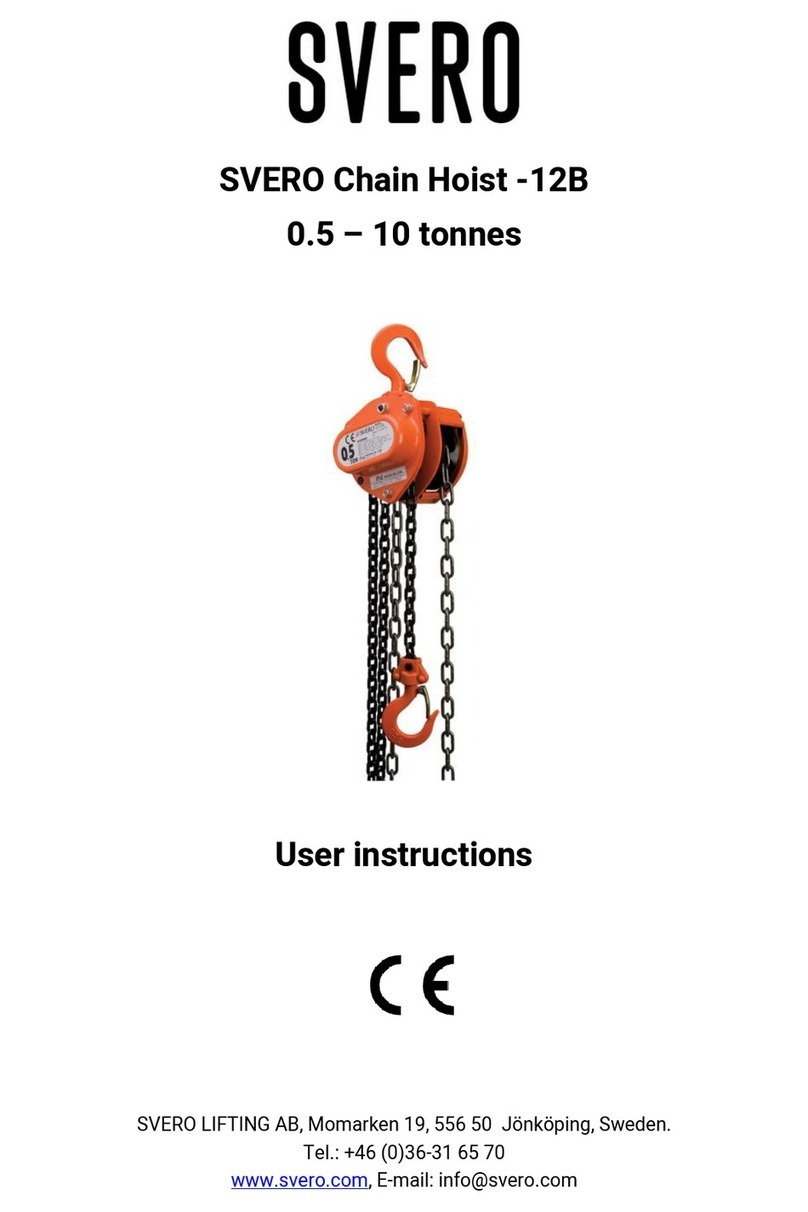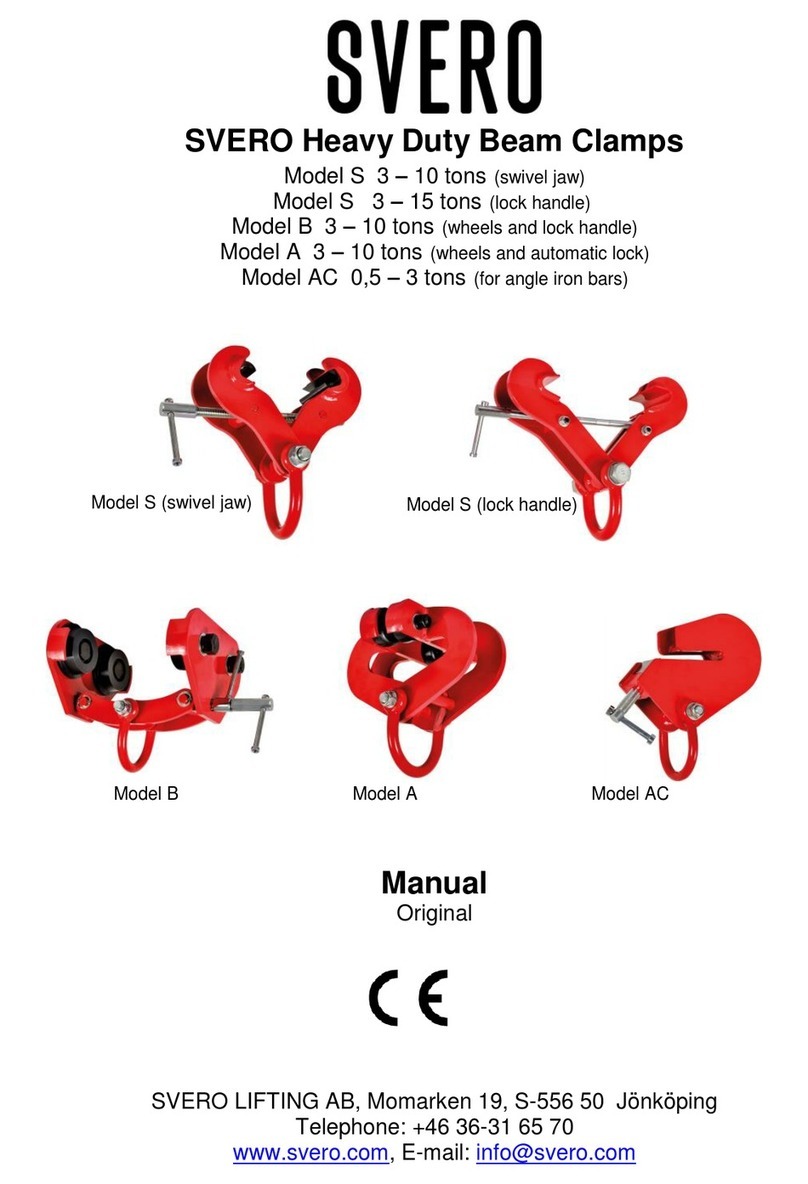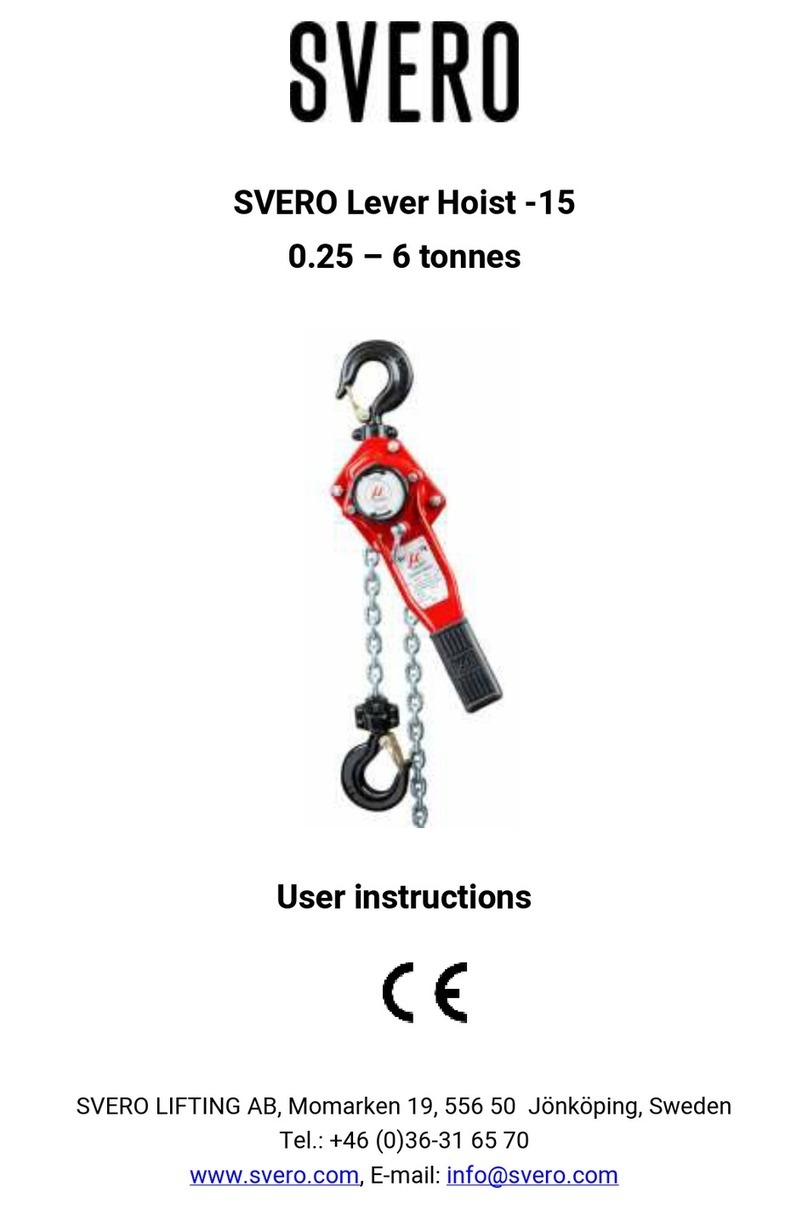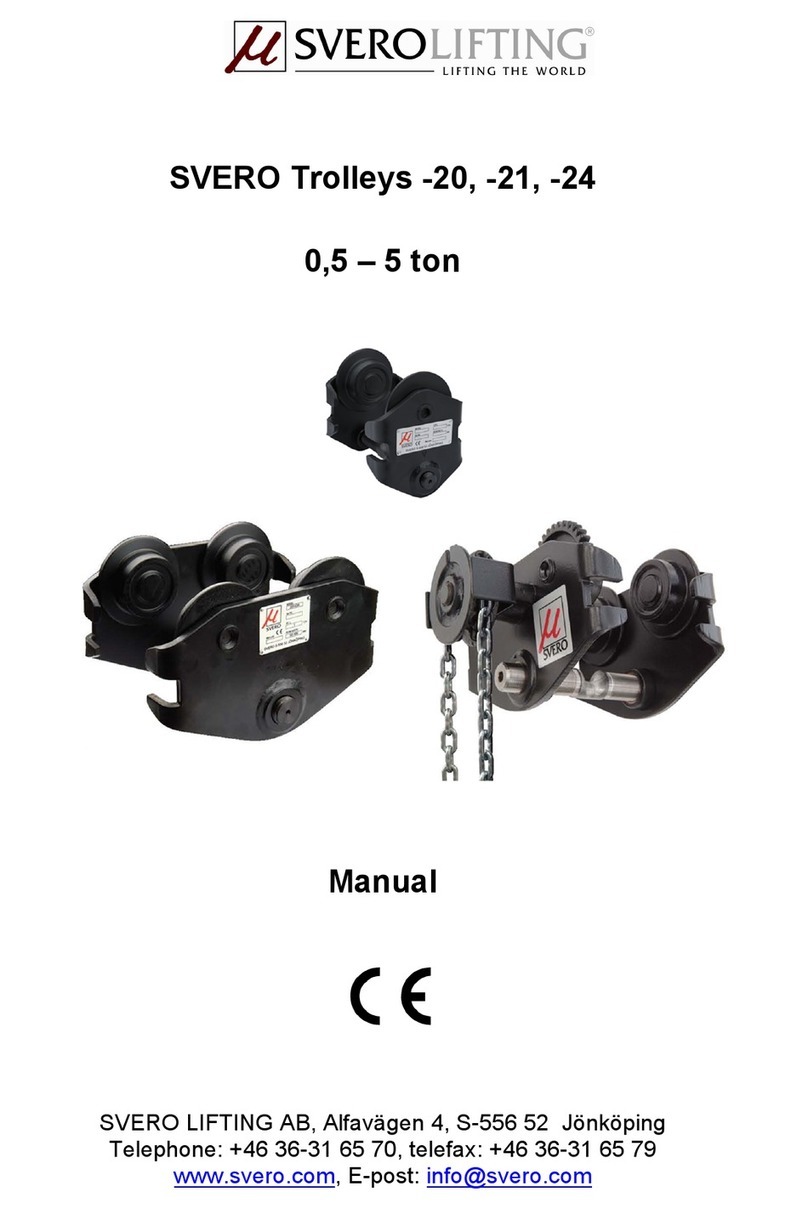
The block must not be subjected to dynamic stresses, for example where a load connected to the block is launched from a
height.
Do not leave a block with a suspended load unattended.
Lowering
With the selector in DOWN position, operate the lever to lower the load. Wait until the chain has been completely freed of load
before moving the selector to Neutral (N) to rapidly pull out the chain. (See “Pulling through the unloaded chain” page 3).
Combined lifts
Combined lifts present special risks. This is where two or more lever hoists are used simultaneously on the same load. Danger
to persons and risk of material damage can arise through dynamic stresses and uneven load distribution causing overload on
individual blocks. Combined lifts must therefore be supervised by a competent person with experience in this type of lift.
Daily checks
After every working day on which the lever hoist has been used, the following should be checked:
Is the lever hoist deformed or otherwise damaged? Are any parts missing?
Is any deformation or other damage visible on the suspension device (eye, shackle, bolt or similar)?
Are the hooks intact or have any hooks opened? Are the hook latches correct and functional?
The selector must work without problems.
Wipe down the lever hoist and oil the chain as required.
The chain must be undamaged, i.e. no signs of wear and no deformed or otherwise damaged links.
The chain must not be kinked or twisted. With 2-fall lever hoists (6.3 t), there is a risk of the chain twisting if the bottom
hook assembly ends up looped through the chain sling –usually as a result of refitting or moving the hoist between work
stations. See Fig 6.
The chain stop must free of deformation or other damage.
The brake function must be intact.
In the event of faults or failures, the hoist must be repaired and carefully checked by a specialist before reuse.
Continuous maintenance - lubrication
Oil the hook latches and bearings. Grease the pawl and ratchet and also the gear. Lubrication must be sparingly and carefully
applied so no grease gets on the brake disk. Oil the chain for longer life.
Periodic checks
Periodic checks are normally carried out yearly to detect and remedy any faults. If required (e.g. high frequency of use), more
frequent checks may be carried out. See “Checklist for periodic checks”. Measure hooks and chain to detect any changes in
shape.
Hook checks (See Fig. 5 and Table 2)
Opening dimension A on the hooks is important. A hook with too large a maximum dimension has been exposed to overloading
or overheating. It therefore does not have the necessary load capacity. The hooks may also have been exposed to long-term
wear (dimension B).
Fig 5 Hook dimensions Fig 6 The chain must not be twisted




















